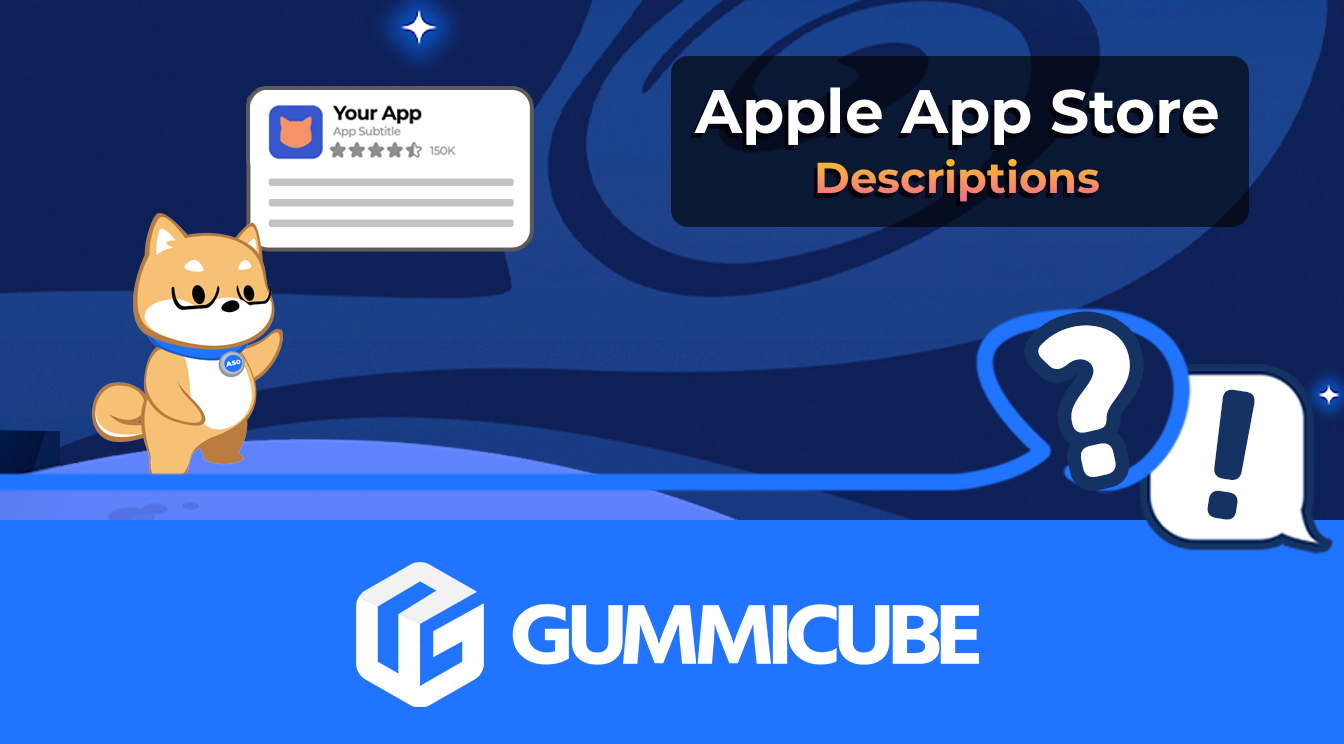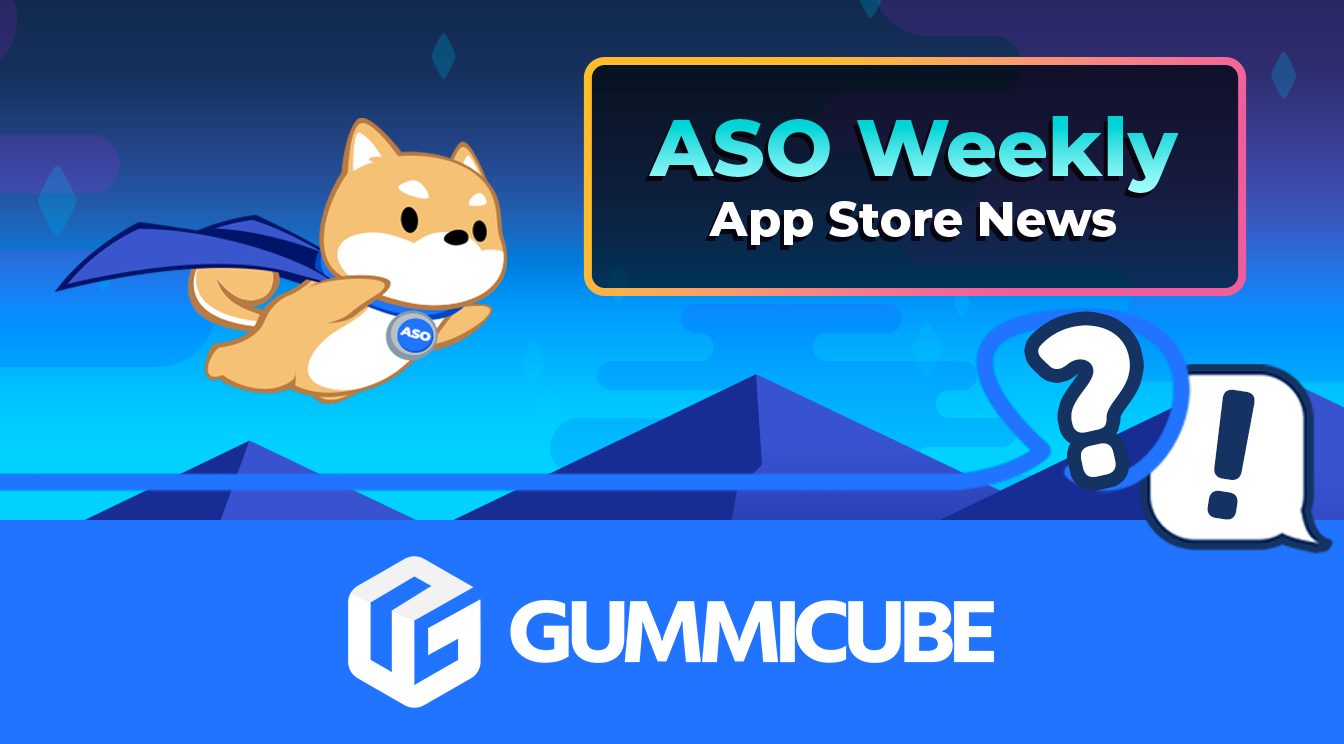
How to Write an Apple App Store Description
Posted on July 17th, 2024
Learn how to approach App Store descriptions the right way so you can effectively engage and convert users.

Welcome to this week’s ASO Weekly – Gummicube’s recurring segment where we discuss some of the biggest events in the mobile app industry, app store developments, and how they may affect your App Store Optimization (ASO) strategy.
This week, we’ll be exploring:
How is Apple preparing for the holiday season? Two words: ad placements. It’s still unclear when users and developers will be able to take advantage of the new opportunity, but the announcement followed the Apple Event that took place just a week ago. Previously, Apple has only dedicated a single unit to its Search and search results page, so this shift to larger, more overt ads is great news for developers looking to expand their reach on the App Store.
But where will these ads be placed? Right now, Apple has stated that these new ad placements will most likely be in the Today tab and the suggestion-focused banner, “You Might Also Like”.
Some users first assumed that the App Store would be running third-party ads from enterprise companies, much like we see so social media. However, these ads will not be advertising anything outside of the App Store. So, users won’t be seeing any outside advertisements that aren’t related to the app ecosphere.
As for what this means for ASO, it’s important to note that ad placement and running effective apple search ads rely on a strong organic backbone to be effective. In fact, using ASO tools and technology will help grow and build the relevance needed to lower the costs of marketing ad spend over time. To take advantage of these new ad placements, it would be wise to do an ASO pulse check first.
It’s been widgets galore for Apple iPhone users! With the iOS 16 update, users are going gaga for arguably one of the largest cosmetic changes to the iPhone UI in years. With dynamic, customizable wallpapers, users are looking for ways to integrate the Lock Screen widget features in a way that suits their app consumption habits. Did third-party apps prepare? Not really, so in came the Top Widgets app.
Top Widgets, however, didn’t enter the scene just recently. Since 2020, the Sichuan-based app developers capitalized on the iOS14 update with Home Screen Widgets. During this time, they racked up about 1.3 million downloads, according to Yahoo Finance. Now, the app has grown over 1,800% with over 30 million downloads, surpassing the BeReal app on the “Top Free” charts in the US and 58 other countries.
Competitors in the space like Widget Smith have also been one of the more successful apps in the category. Widgetsmith’s popularity predominantly rose around the release of iOS 14 with hyper-personalized offerings and paid subscription models for additional customizations. So how did Top Widgets dethrone Widgetsmith?
Well, as their current App Store full description stands, they happen to use “widgetsmith” cunningly placed in one of the paragraphs. Apple has a strict policy against developers mentioning competitors in their full description, so this may be a clever slip through the cracks, but Apple has yet to flag the description against the policy. Additionally, unless they are running Apple Search Ads, full description app metadata doesn’t get included in the indexation process. This may have been Top Widgets' attempt at simply converting the user with familiar keywords and language.
Want to learn more about App Store Optimization? Contact Gummicube and we’ll help get your strategy started.

Learn how to approach App Store descriptions the right way so you can effectively engage and convert users.

Learn how to grab your audience's attention through effective and engaging app store preview videos.

Welcome to this week’s ASO Weekly - The App Store halts gambling ads amidst outcry and the Apple takes a bite out of NFT app sales.